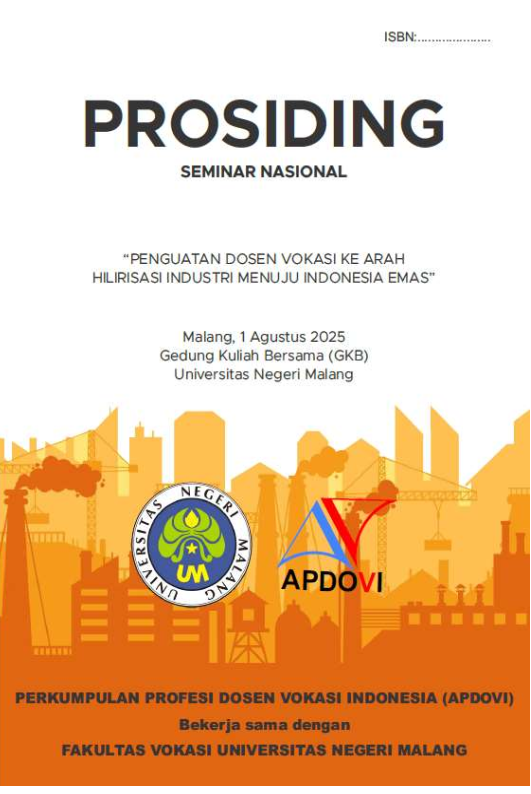Pengembangan Produk Lokal Keripik Sawo Belanda Sebagai Alternatif Oleh-oleh Kota Sumedang
Abstrak
Abstrak
PENGEMBANGAN PRODUK LOKAL
KERIPIK SAWO BELANDA SEBAGAI ALTERNATIF
OLEH-OLEH KOTA SUMEDANG
Keripik atau Chips adalah salah satu cemilan yang disukai oleh masyarakat Indonesia. Pada umumnya keripik terbuat dari umbi-umbian atau buah-buahan yang diiris tipis kemudian digoreng sampai kering, namun pada penelitian ini penulis menginovasi chips dengan memanfaatkan Sawo Belanda yang sudah sangat matang dan tidak laku dijual. Sawo Belanda kurang diminati oleh masyarakat karena bertekstur padat dan pulen seperti ubi, oleh karena itu penulis berinisiatif untuk mengolahnya menjadi keripik/chips sebagai bahan penelitian. Penelitian ini bertujuan untuk mengetahui tingkat kesukaan panelis meliputi penampilan, warna, tekstur, aroma, dan rasa, mengetahui standar resep, teknik pengemasan, dan analisis usaha chips Sawo Belanda. Metode penelitian yang digunakan adalah research and development (R&D). Hasil penilaian terhadap tingkat kesukaan panelis didapatkan nilai penampilan 52% suka, warna 56% sangat suka, aroma 64% sangat suka, tekstur 72% sangat suka, dan rasa 96% sangat suka. Standar resep yang dihasilkan yaitu: 115g tepung tapioka, 50g tepung terigu, 100g Sawo Belanda, 120ml air, 30g gula pasir, 2g garam, dan 250ml minyak goreng. Teknik pengemasan chips Sawo Belanda menggunakan plastik standing pouch karena dapat menahan udara yang masuk sehingga membuat chips lebih tahan lama. Hasil perhitungan mengenai analisis usaha diperoleh harga pokok per pouch (50g) Rp. 1.310, harga jual sebesar Rp. 3.800, food cost sebesar 34%, BEP tercapai setelah terjual 964 pouch, fixed cost sebesar Rp. 2.200.000. Agar mendapat target margin sebesar Rp.3.500.000,-/bulan maka harus terjual sebanyak 204 pouch/hari atau 6.120 pouch/bulan.
Kata kunci: Keripik, Sawo Belanda, Kota Sumedang
Abstract
DEVELOPMENT OF LOCAL PRODUCT CHIPS
AS AN ALTERNATIVE SOUVENIR OF SUMEDANG CITY
Chips are one of the snacks favored by the Indonesian people. Generally, chips are made from tubers or fruits that are thinly sliced and then fried until dry, but in this study, the author innovated chips by utilizing very ripe and unsold Sawo Belanda (Dutch sawo). Sawo Belanda is less popular among people due to its dense and starchy texture similar to cassava, therefore the author initiated to process it into chips as the subject of research. This study aims to determine the preference level of panelists covering appearance, color, texture, aroma, and taste, to know the standard recipe, packaging techniques, and business analysis of Sawo Belanda chips. The research method used is research and development (R&D). The assessment results on the level of preference of the panelists obtained the appearance score of 52% like, color 56% really like, aroma 64% really like, texture 72% really like, and taste 96% really like. The standard recipe produced is: 115g of tapioca flour, 50g of wheat flour, 100g of sapodilla, 120ml of water, 30g of granulated sugar, 2g of salt, and 250ml of cooking oil. The packaging technique for sapodilla chips uses a plastic standing pouch because it can keep out the air, making the chips last longer. The calculations regarding the business analysis show that the cost price per pouch (50g) is Rp. 1,310, the selling price is Rp. 3,800, the food cost is 34%, the breakeven point is achieved after selling 964 pouches, and the fixed cost is Rp. 2,200,000. To achieve a target margin of Rp. 3,500,000/month, 204 pouches/day or 6,120 pouches/month must be sold.
Keywords: Chips, Dutch Sawo, Sumedang City


